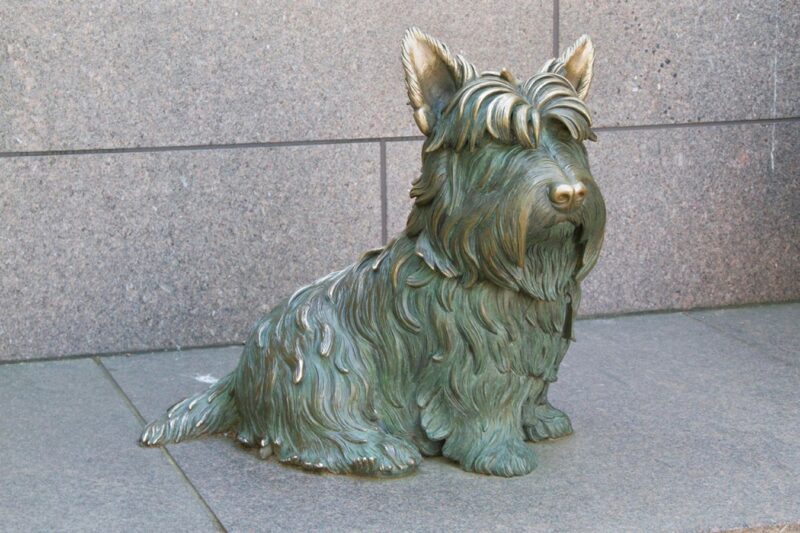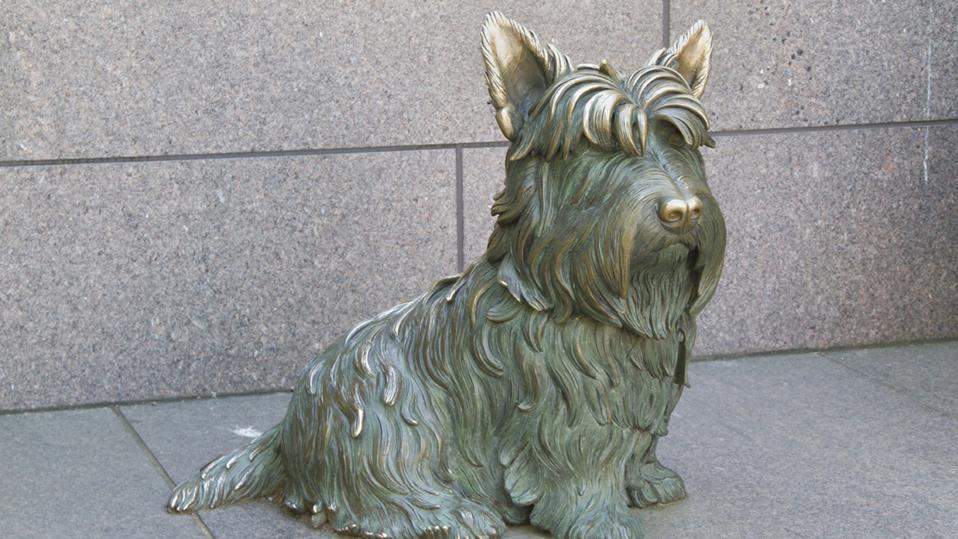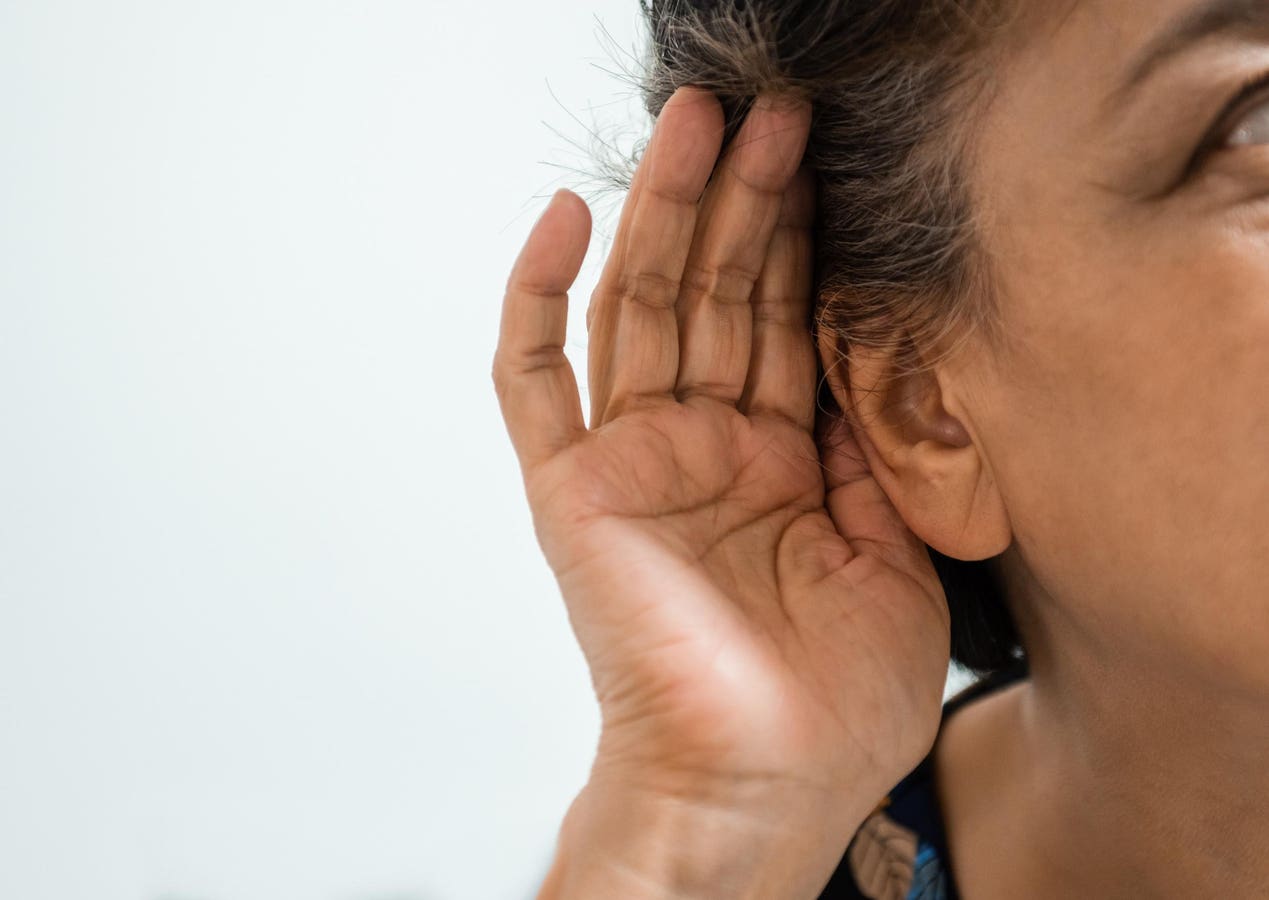The bond between the president and his dog has become an iconic part of American politics. Here is perhaps the most famous “U.S. president – first dog” relationship.
getty
More presidents than not have been pet owners. One notable exception is Donald Trump, who has kept no pets at the White House during his first or second terms.
Perhaps the most famous presidential dog, or at least the one that has been best immortalized, is Fala, the Scottish terrier companion of President Franklin D. Roosevelt. Fala is unique among presidential pets in that he is the only one to have been honored with a statue on the National Mall, placed beside FDR in the Franklin Delano Roosevelt Memorial in Washington, D.C.
Fala: A Brief Biography And Legacy
Fala (born April 7, 1940; died April 5, 1952), formally named Murray the Outlaw of Falahill, was gifted to FDR by his cousin Margaret “Daisy” Suckley. The dog accompanied Roosevelt to numerous public engagements, travels and naval voyages.
Fala was not just a decorative accessory: he had learned tricks, received formal obedience training and became deeply integrated into the public persona of the president.
In 1944, during FDR’s re‑election campaign, a Republican charge claimed the president had dispatched a naval ship to retrieve Fala after the dog was left behind during a visit to the Aleutians. Roosevelt replied with what became known as the “Fala Speech,” in which he declared that Fala “does resent” false attacks on his name. That moment elevated the dog into a living political symbol.
Today, in the Roosevelt Memorial’s third “room,” the bronze statue of Fala sits alongside FDR himself. The statue was sculpted by Neal Estern and remains a locus of public interest and veneration.
Comparing Fala To Other Presidential Dogs
Though Fala may be the only presidential dog with a public statue on the National Mall, there are many other famous first dogs, and at least one other with a statue to honor it.
One presidential pet celebrity was Laddie Boy, an Airedale Terrier belonging to Warren G. Harding. He was widely covered by contemporary newspapers, had a carved chair for Cabinet meetings and had a memorial statue made (from thousands of pennies donated by newsboys) and placed in the Smithsonian. Unlike Fala, the sculpture of Laddie Boy is not on display. There is another sculpture of Laddie Boy, with Harding, that can be found in Rapid City, South Dakota.
Other first dogs have features of note: for example, Abraham Lincoln’s dog, Fido, lived mostly in Springfield and never resided full‑time at the White House, limiting his public visibility. The Bushes’ dogs — Millie and her puppy Spot (later Spotty) — were familiar to TV audiences, but lacked the kind of symbolic political incident that Fala enjoyed.
Presidents more recently have selected dogs (e.g. Bo and Sunny Obama, Champ and Major Biden) partly to humanize their image, but none have yet matched the mythos built around Fala.
A Biologist’s Lens: Why Fala Resonates
From a scientific vantage, two particularly interesting angles stand out: first, the human–dog bond as a channel for public empathy; second, the genetics and behavior of domestic dogs that amplify the appeal of certain individual animals.
Humans have coevolved with dogs (Canis familiaris) for thousands of years, selecting for behaviors that encourage social bonding with people. Modern genome sequencing reveals that dogs and wolves diverged through a process of gene flow and bottlenecks, but dogs have retained or developed loci under selection for sociability with humans.
In public settings, a president with a dog signals kindness, accessibility and a relatable domestic life.
Fala’s constant presence at Roosevelt’s side on ships, trains and in official portraiture leveraged that preexisting bond. To the average citizen in 1940s America, seeing the president’s loyal terrier humanized a leader of global import.
Breed also plays a role in memory and charisma. Scottish Terriers are compact, alert and expressive. Their square proportions, erect ears and characteristic gait make them visually memorable. Compared to more generic mixed‑breed dogs, purebreds in public roles may imprint more strongly in collective memory.
Are you an animal lover who owns a pet? Take the science-backed Pet Personality Test to see how well you know your little friend.









